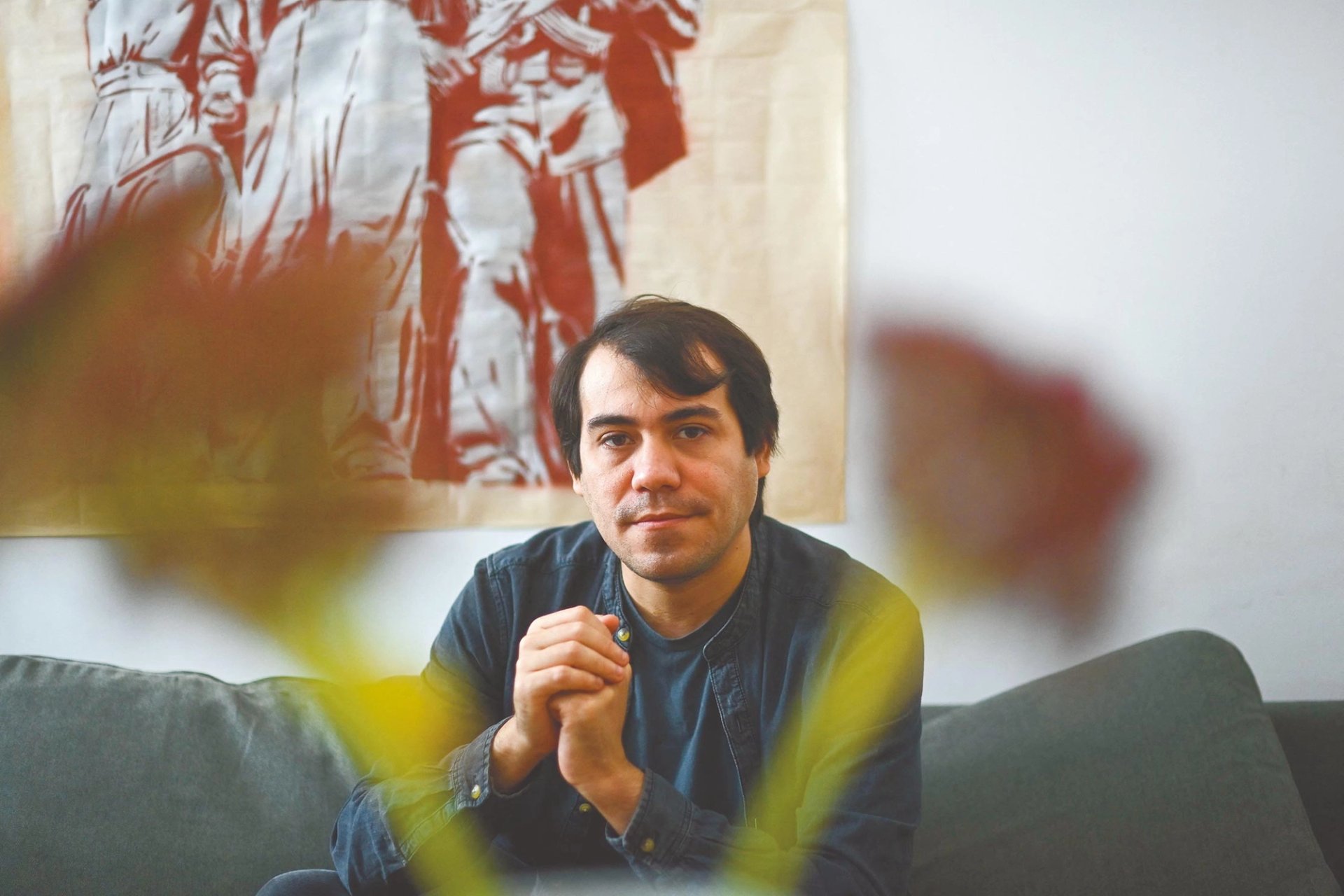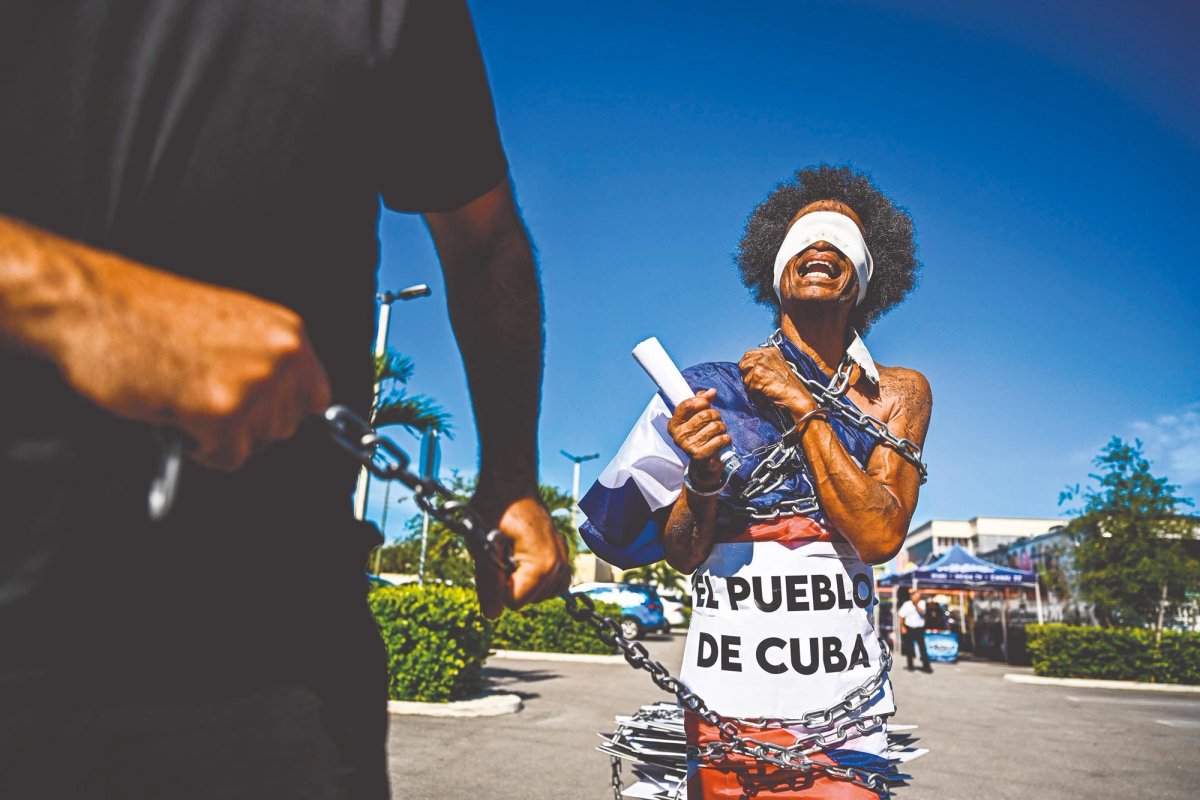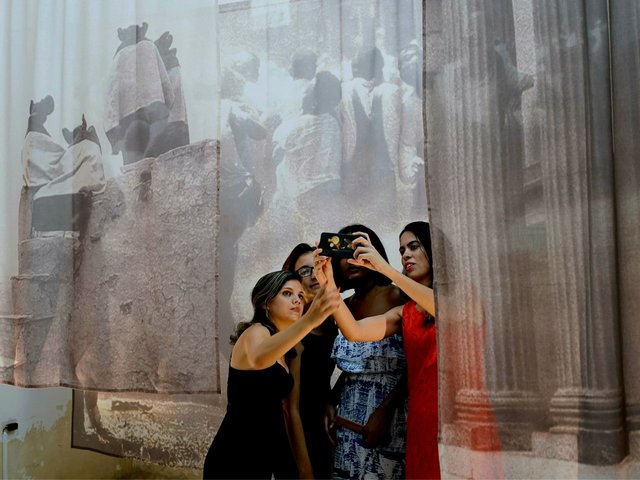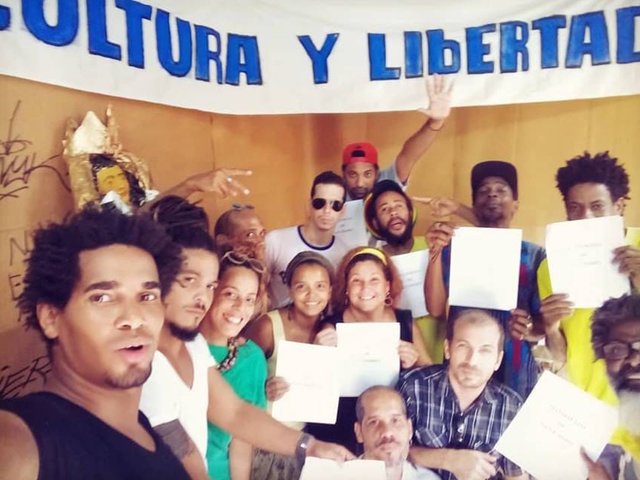In Cuba, censorship has escalated because the political infrastructure of the country is collapsing incrementally, a thesis supported by the artist Hamlet Lavastida’s testimony that “Castro was the law but now he’s gone, the people in power do not have legitimacy”. In a country where the judiciary is not separate from any branch of government, artists are subject to harassment that appears unrestrained. (The Cuban embassy in London did not respond to queries about restrictions.)
The Cuban government has arguably become more totalitarian with Miguel Díaz-Canel at the helm in the positions of both First Secretary of the Communist Party and President of the State, a position he filled in April 2018. The new leader—not a Castro for the first time in 40 years—has employed the pretext of government legislation to clamp down on creative expression under a Communist regime, where Decree 349 requires artists to register for a government-issued licence. Under Decree 349—published in July 2018 and implemented the following December—all artists, including collectives, musicians and performers, are prohibited from operating in public or private spaces without prior approval by the Ministry of Culture. Amnesty International noted that the decree is likely to have a generally restrictive effect on artists in Cuba, preventing them from carrying out legitimate work for fear of reprisals. The human rights organisation notes that “the decree contains vague and overly broad restrictions on artistic expression”, paving the way for “its arbitrary application to further crackdown on dissent and critical voices”.
“Castro was the law but now he’s gone, the people in power do not have legitimacy”Hamlet Lavastida, Cuban artist
The Cuban government says it has not fully implemented Decree 349, but dissident artists have been persecuted in many ways since the law went into effect via hostile interrogations, fines, detentions and performance cancellations, says Coco Fusco, a Cuban American artist and writer. But another less publicised law has had an equally calamitous impact on the freedom of artists. Decree 370 curbs communications on social media, further censoring the dissemination of information on the island of Cuba, a law that has been further tightened in late 2021 by the introduction of Decree 35, which introduced stricter controls on the use of social media.
A recent Cuban cultural revolution led by artists and creatives, which has escalated since the death of Fidel Castro in 2016, has prompted the severest of clampdowns, but several developments and figures stand out in this ongoing censorship chronicle. The activist collective 27N was founded in November 2020 during a demonstration outside the Ministry of Culture in Havana, while artists such as Lavastida and Luis Manuel Otero Alcántara were at the forefront of protests that erupted across Cuba in July 2021 when people marched against hyperinflation and growing social inequality. Both men have experienced the impact of the government’s clampdown. Lavastida, a member of 27N, was arrested in June 2021 upon returning from an artist’s residency in Germany. In custody, he learned that an idea shared in a private chat—stamping Cuban currency with the logos of two activist groups—had prompted the authorities to charge him with “instigating to commit a crime”. He spent three months at Villa Marista, the state security headquarters, and was sent into exile in Poland in September 2021. He has said that he was interrogated about the motivation behind his art, his interest in politics and activism, and why he maintains relationships with individuals based in the US, such as Fusco. Meanwhile, in May 2021, Otero Alcántara, the founder of the San Isidro activist movement, was detained and hospitalised against his will by the Cuban security service eight days into a hunger strike after calling for free speech and artistic freedom on the island. Since 2018, he has been detained more than 50 times and at the time of writing remains in prison.

Hamlet Lavastida now lives in exile in Poland; at last year’s Untitled Art Fair, his idea of stamping Cuban currency with messages of solidarity was realised Photo: Ina Fassbender/AFP via Getty Images
Lavastida has given the background for his own situation and how the government’s reactionary measures have escalated, providing a coda to decades of suppression since Castro took power in 1959. Artists have always been fearful of retribution under the rule of the Communist Party, he says, but 2018 was a turning point after the authorities announced the rollout of a national 3G network allowing Cubans to access the internet from anywhere. Lavastida sees the move as momentous, bringing an “analogue government in conflict with a digital society”.
Online circumvention
Crucially, “many voices that were silenced for decades could now speak freely to people abroad and internally”. Fusco astutely puts recent events in context, explaining how the raft of decrees enforced post-2018 “criminalise the activity of most people online who have any political consciousness whatsoever”. She stresses that artists were among the first Cubans in the 1990s to be allowed to sell their work directly in hard currency, permitting travel and more access to foreigners.
This recent access to the worldwide web has nonetheless enabled artists to circumvent government control, giving them a degree of freedom, albeit still in the shadow of the government which has failed to maintain hegemony over the circulation of information. “They are losing that battle. The artists and the intellectuals are succeeding in getting around them,” Fusco adds. This has resulted in an ironic subversion of autonomy as the government is desperate to accrue revenue from the hard currency that comes from internet usage, which has exploded since 2018, Fusco says. “They want to get the money, but they want to control the political content.” Yet those artists who incorporate political activism into their practices have been more at risk than ever in the wake of the recent decrees. Lavastida has been in the eye of the storm for a decade, developing work that deconstructs images and iconographies of the Cuban revolution. At the Untitled Art fair held in Miami Beach in late 2021, he finally realised his idea of stamping currency with messages of support for freedom of expression in Cuba, joining the performance via Zoom as Fusco and another Cuban artist, Marco A. Castillo, marked visitors’ bills.
• This is an excerpted passage from Censored Art Today (2022), published by Lund Humphries Publishers and the Sotheby’s Institute of Art
• Listen to Gareth Harris speak more about his book on art censorship here





